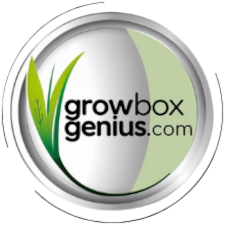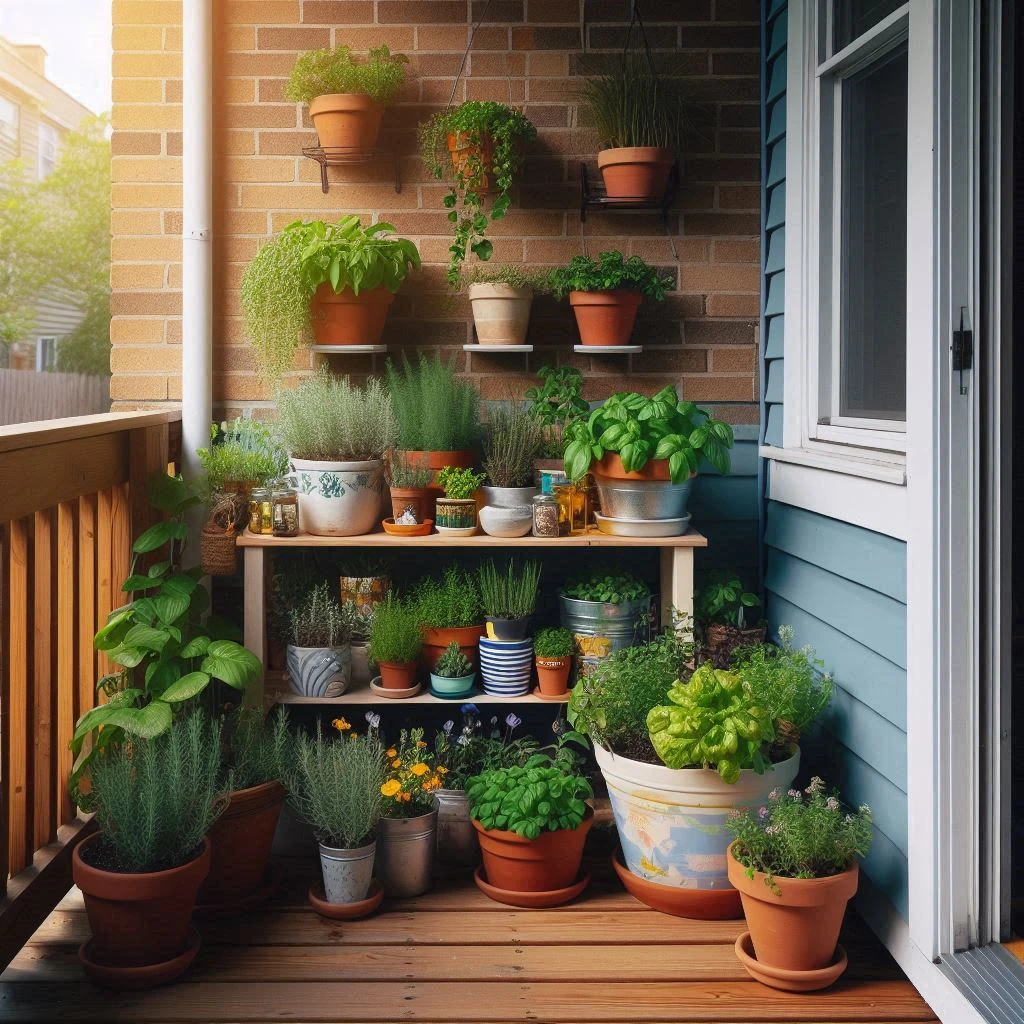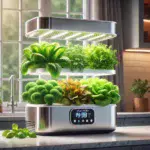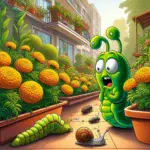Container gardening for food has surged in popularity in recent years—especially for those of us working with limited space. From urban balconies to tiny patios, people everywhere are discovering creative ways to grow their favorite herbs, veggies, and even fruits in containers. 🌿
There’s something deeply satisfying about turning compact, overlooked areas into lush, productive mini-gardens. Whether you’re new to growing food or a seasoned green thumb exploring a new avenue, container gardening offers flexibility, accessibility, food and plenty of satisfaction. 🧺
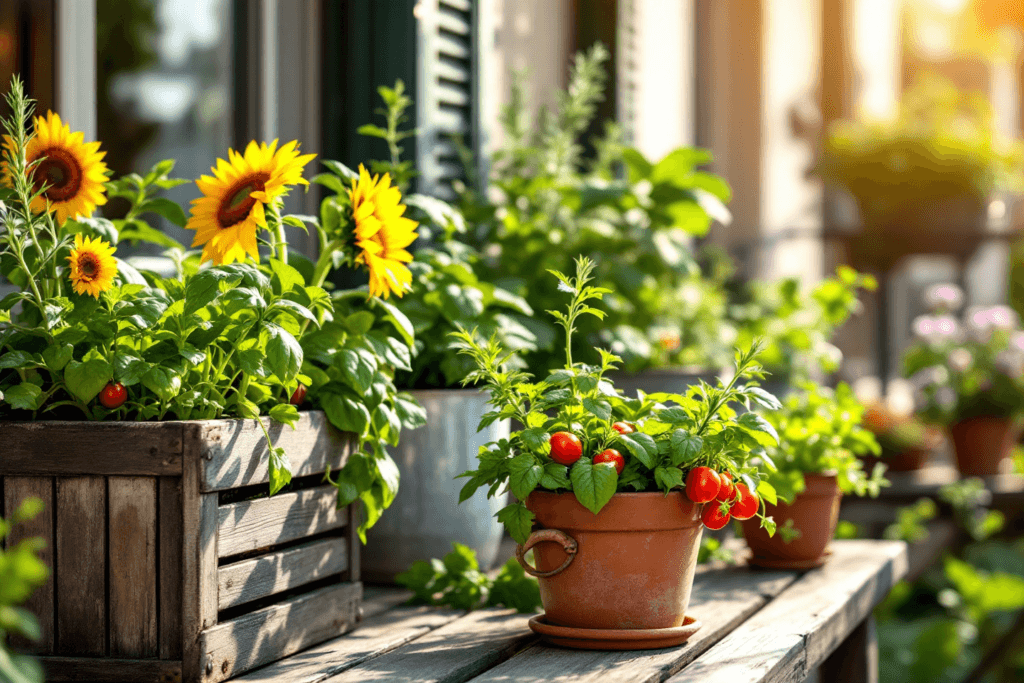
🌟 Why Container Gardening Works So Well
Container gardening brings several advantages that make it perfect for urban or small-space gardeners:
- Flexibility: Rearrange plants for better sunlight or aesthetics with ease.
- Accessibility: Perfect for those with physical limitations or no yard space.
- Scalability: Start small and expand as you grow more confident.
It’s also ideal for beginners and experienced gardeners alike. Whether you’re testing the waters or expanding your skills, containers offer a controlled environment that’s both manageable and rewarding.
🛑 Watch out for overwatering—it’s one of the most common mistakes. Poor drainage can lead to soggy soil and root rot. Always ensure your containers have proper drainage holes!
🧰 Starting Strong: Essentials for Setting Up Your Container Garden
Starting your container garden is simple—when you follow a few key steps:
🪴 Choose the Right Container
- Size matters: Larger containers hold more soil and moisture, encouraging strong root growth.
- Material tips: Consider clay, ceramic, or plastic. Each offers benefits in moisture retention and durability.
🧪 Get the Soil Right
- Use high-quality potting mix—not garden soil.
- Add materials like peat moss or coco coir for improved moisture balance and aeration.
🔄 Pro Tip: Use a mix that drains well but retains moisture. Good soil is the foundation of a thriving container garden.
⚠️ Know the Challenges
- Limited root space means some plants may stay smaller.
- Frequent maintenance: Containers dry out faster, requiring more watering and feeding.
Still, with a little planning and care, these minor hurdles are easy to manage—and the rewards are delicious!
🌱 Best Practices for Healthy Container Plants
🍽️ Feed for Success
Organic fertilizers work best in containers. Consider:
- Fish emulsion
- Blood meal
- Compost teas
They release nutrients slowly, giving your plants a steady diet without shocking them.
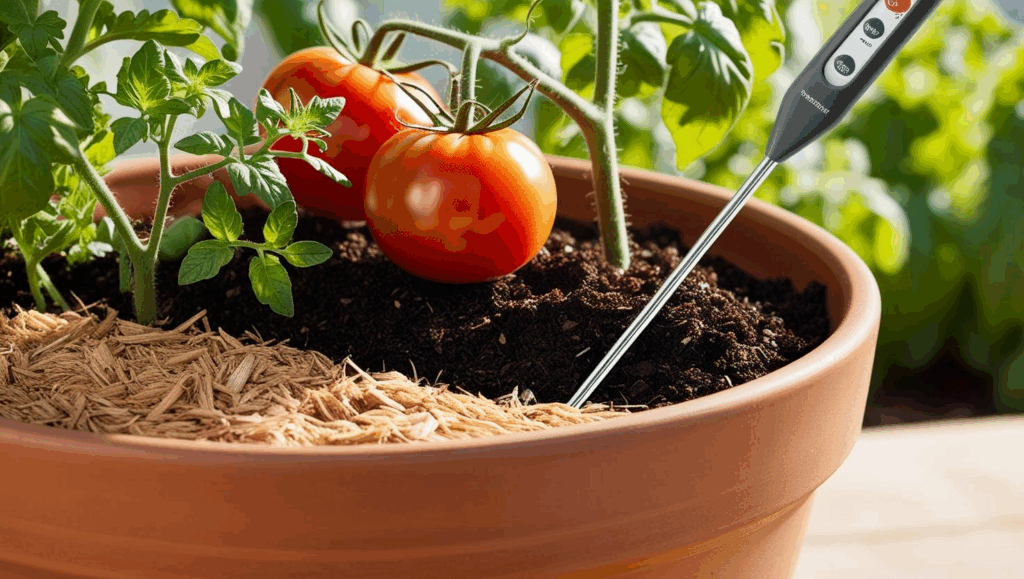
💧 Water Wisely
- Check soil daily by poking your finger about 1 inch deep. If it feels dry—time to water!
- Don’t overdo it. Too much water leads to root rot.
☀️ Smart Placement
Align plant location with sunlight needs:
- Full sun: Tomatoes, peppers, strawberries
- Partial shade: Lettuce, parsley, mint
Move containers if necessary to chase the sun or avoid scorching.
🐞 Pest Patrol
- Inspect regularly for signs of pests or disease.
- Use organic sprays or natural helpers like ladybugs to control outbreaks.
🧄 Harvesting Diversity: Best Edible Plants for Containers
🌿 Herbs
- Basil, mint, parsley, and thyme are easy and rewarding.
- Great for windowsills or balconies.
🥬 Vegetables
- Cherry tomatoes
- Peppers
- Lettuce
- Radishes
These plants don’t need a ton of root space, making them container-friendly.
🍓 Fruits
- Strawberries grow beautifully in hanging baskets or small pots. Just give them plenty of sun.
🧑🌾 Tip: Choose compact or dwarf varieties for the best results in containers. Your local nursery can offer plant recommendations based on your climate.
🤝 Boosting Yield with Companion Planting
Companion planting is a powerful way to improve growth and deter pests naturally. For example:
- Tomatoes + basil = Enhanced flavor and pest protection
- Lettuce + chives = Space-efficient and bug-resistant
These plant pairings make your garden more efficient and increase harvests—all in the same container!
🛒 Handy Supplies for Container Gardening
Looking for gear to get started or upgrade your setup?
🌼 Window Box Planter – Garden Supply Co.
Perfect for herbs or flowers with a decorative touch.
🚿 Self-Watering Rolling Planter – Garden Supply Co.
Excellent for mobility and consistent hydration, especially in hot climates!
🧠 Final Thoughts: Mastery Comes with Practice
Container gardening is more than just a trend—it’s a lifestyle. With the right containers, good soil, smart watering, and some strategic sunlight, you can grow a wide range of edible plants in even the tiniest of spaces.
With every new season, you’ll get better at reading your plants, adjusting your care routine, and enjoying the fruits (and herbs!) of your labor.

